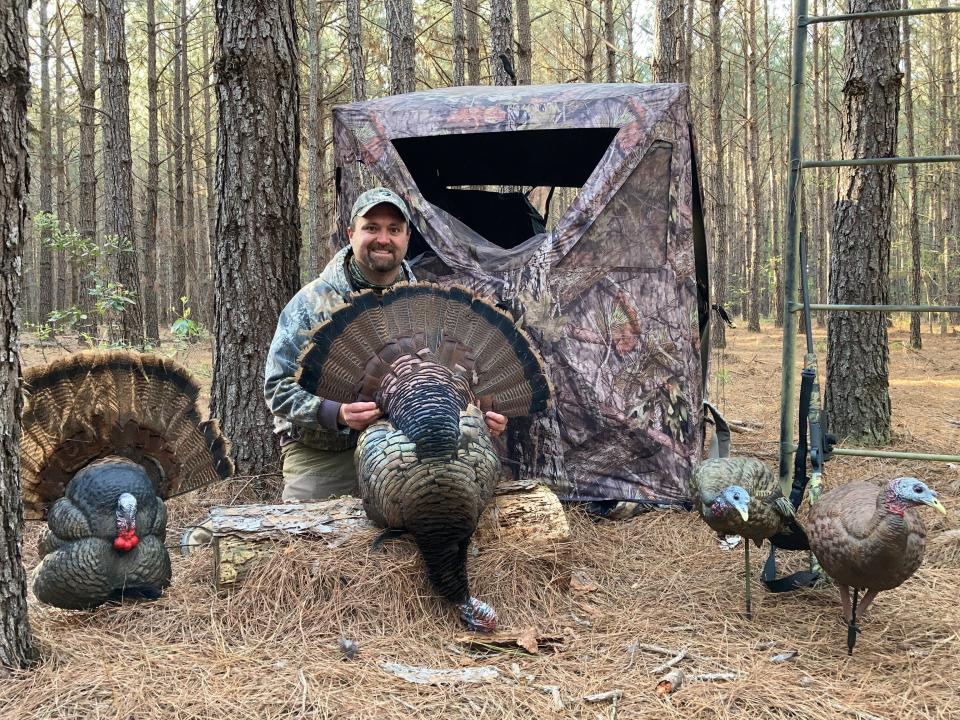South Carolina's Low Country popular spot for turkey hunting

South Carolina’s Low Country longbeards are kindred spirits with Florida’s Osceola gobblers. These swamp-loving birds persist in frustrating even veteran turkey hunters with their similarly capricious natures and infuriating bouts of lockjaw, often unexpectedly slipping silently into set-ups. And as I wandered out of a hardwood bottom near Estill in the spring of 2020 after they hung another "L" on me, I vowed revenge if I ever returned.
The Low Country consists of 11 counties in the southeastern corner of the state. Unfortunately for their collective chambers of commerce, this region has been in the news lately with the national spotlight on the so-called Murdaugh Murders, when local attorney and power broker Alex Murdaugh was convicted of murdering his wife and son in 2021, among other alleged crimes.
But that won't deter any hunters. The Low Country long has been a focus of sportsmen, especially inland of Charleston, Beaufort and Hilton Head where salt marshes transition to timber, open-field agriculture, bottomland swamps and sparse human populations that have allowed deer and turkey to thrive. This abundance of game places these counties within the sights of traveling hunters, where their economic impact is critical to local economies.
More:Gearing up for turkey hunts can really pack your vests
I’ve hunted the Low Country off and on for over 25 years, from the Salkehatchie River between Ulmer and Olar, north to Ehrhardt, and down to Allendale and Estill. Physically, little has changed in these towns over the decades. These communities stubbornly endure along U.S. Routes 301 and 321, frozen in amber since Interstate 95 was opened and siphoned away the traffic.
What has changed has been the adoption of game management practices that fostered better-quality whitetail deer. The popularity of turkey hunting, too, blossomed over this time. This resulted in higher nonresident demand for leases that continues to rise today.
Regulation increasing because of popularity of turkey hunting
More pressure on the wild turkey resource brought the call for additional research and management money. Nonresidents once were afforded three free turkey tags with a short-term hunting license and big game permit. Currently, it's two tags for $100, plus the hunting license and big game permit. Five turkey tags sell for $5 for Sourg Carolina residents.
The harvest structure also has changed. The 2023 hunting season in the Low Country begins March 22, near the peak of breeding season. No more than one tom may be shot on private lands between then and the 31st to prevent the harvest of too many gobblers before mating with hens. This is unique but could start a trend as turkey populations decline across the South.
Finding turkeys was never my issue on my friend's Estill lease. Those birds were semi-aquatic in the swamps, though. I watched a hen swim from one fallen gum tree to another one evening while roosting a gobbler who plopped into that impenetrable swamp the next morning, leaving me shaking my head and defeated. For a lifelong Osceola hunter, it rang all too familiar.
Fortunately, I did tag a pair of gobblers near the same swamp over Easter weekend of my 2021 revenge tour. As advertised, both birds sneaked into the decoys quietly to soft yelping from my scratch call. And I'm fortunate they did. Last year, the landowner sublet the turkey hunting rights out from under my buddy to another party for an untoward sum.
Such is life and modern reality for Low Country turkey hunters.
This article originally appeared on The Ledger: South Carolina's Low Country popular spot for turkey hunting

